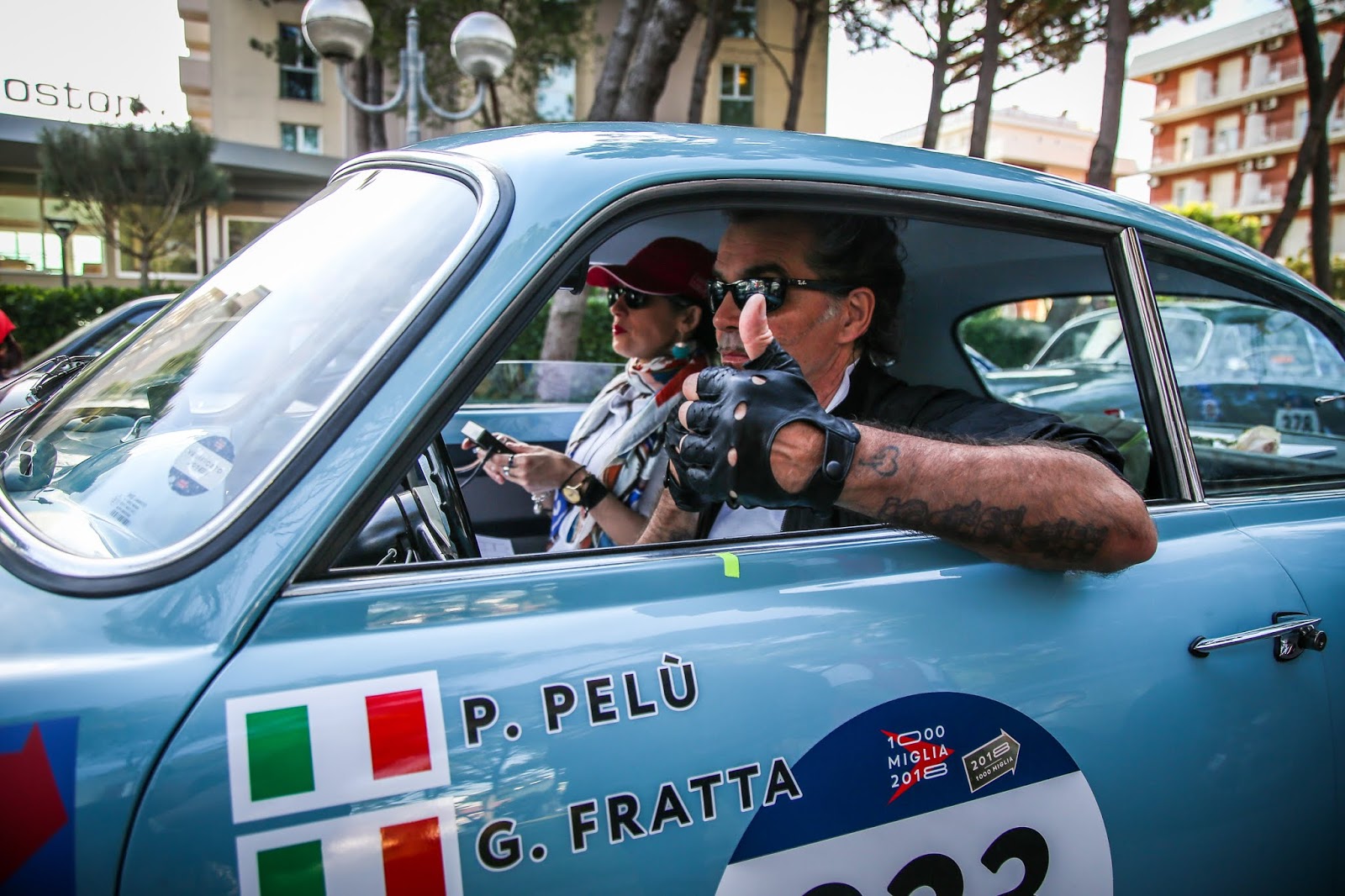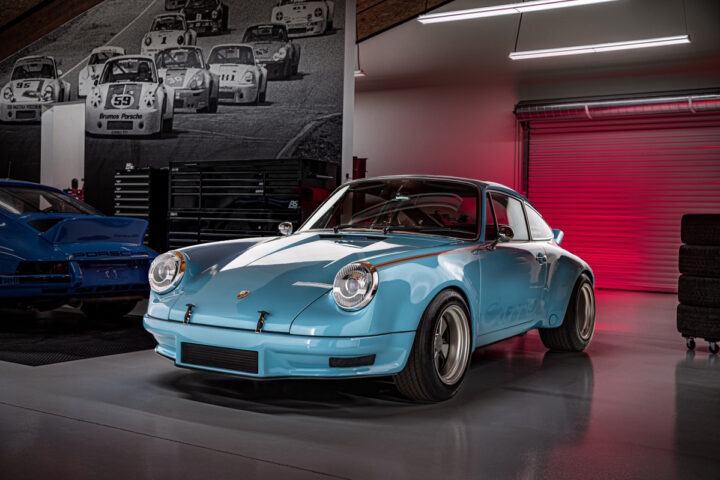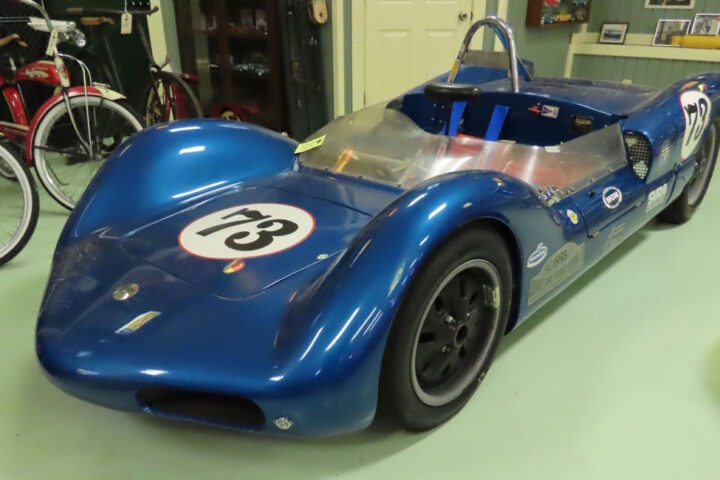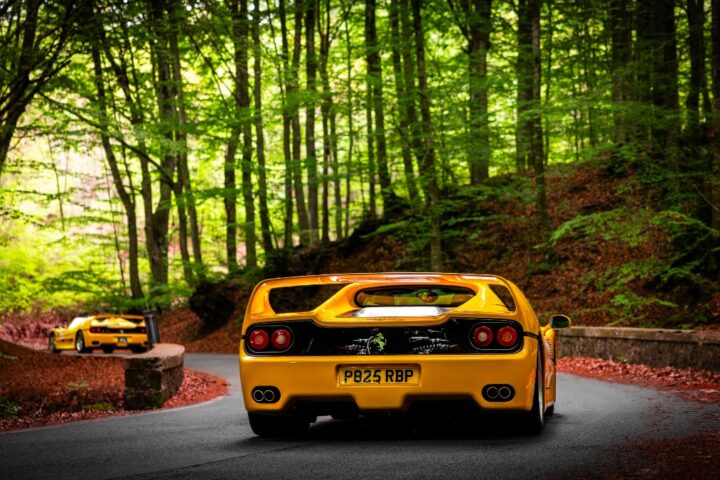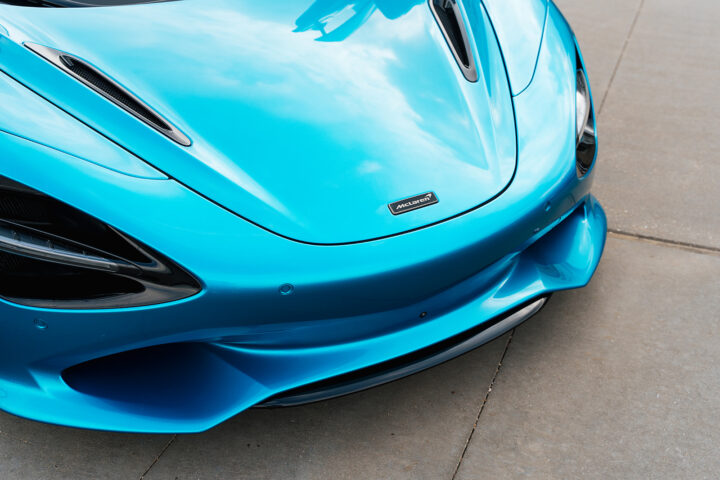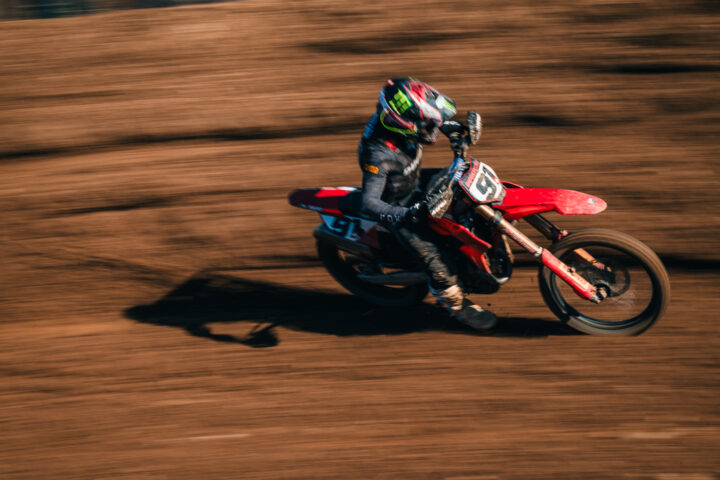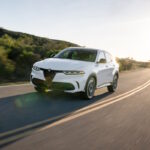TGR Staff
The overnight stay at Milano Marittima was a short one and the caravan was on the move again at first light. The rain, which had been very testing for the crews, especially in Ferrara, had given way to hazy sunshine and was greeted with pleasure by the drivers and navigators. The second stage was long and demanding, leading to a turnaround point in Rome. The distance was not particularly long considering the number of hours at the wheel, but the average speeds set were low and the race passed through many town centers, where the competitors received an enthusiastic welcome from fans. Leaving the center of Milano Marittima behind, the route led across the Salina Park in Cervia before joining the Via Romea Sud, while the sun rose over the Adriatic and Cesenatico, Bellaria, Rimini, and Riccione slipped by along the coast.
At Pesaro, the changing of the guard between the Mille Miglia and Giro d’Italia
The caravan traveled from Gabicce Mare to Gabicce Monte, with a time trial on the Via Panoramica, followed by another at Casteldimezzo. The cars then crossed the Monte San Bartolo Natural Park to Pesaro, known as “Bicycle City” because of the vast network of cycle tracks that criss-cross the surrounding area. But this passion for two wheels shared space with cars, and the arrival of the “Red Arrow” was welcomed by a crowd in celebratory mood on Piazza del Popolo on a very special day for Pesaro: yesterday it also welcomed the passage of the 12th stage of the Giro d’Italia, another event in which Alfa Romeo plays a major role.
In fact, Giulia and Stelvio are the official cars of the pink-jersey race, in a partnership that unites two world-famous symbols of Italian identity. Cycle bells replied to the ringing car horns and the caravan proceeded north with the ascent to San Marino. Here, it gave the compulsory salute to the tiny Republic perched on Monte Titano and San Marino replied with its customary warmth, amply rewarding the climb and the many bends.
Sansepolcro and Arezzo, where past and future meet:
It was almost lunchtime as the cars approached the streets of Arezzo, passing through Sansepolcro, famously known as the birthplace of Piero della Francesca. His wonderful works offer an admirable blend of art and geometry and seem to mediate between tradition and modernity. This alchemy is also very much present in the motoring world and the Mille Miglia is a fine example: along the 47 historic official and privately owned historic cars taking part, Alfa Romeo has also lined up the best of current production as Official Cars for the event. Watching the passage of the “Red Arrow” is, therefore, an ideal way of getting first-hand experience of the brand’s DNA, steeped in history and competition and with the vigor of a legendary past. For an enthralling look back over the brand’s successes 90 years after its first victory, the “Alfa Romeo: the Mille Miglia in 90 places” project is now online.
From small fortified towns to the Eternal City:
After the break-in Arezzo, it was time to be off again: this was the halfway point and now the route headed for Rome. The shores of Lake Trasimeno led to Castiglione del Lago, one of Italy’s loveliest historic towns. Then came the streets of Orvieto, before heading for the open country. Umbrian specialties were to the fore in Orvieto and also at Baschi, where there was a new time trial. Through their car windows, drivers could see the green countryside and hear a silence only broken by the gentle rustle of vegetation and the roar of engines. Time-keeping was a constant but did not prevent participants from enjoying the views and appreciating the beauties of the landscape.
The first crews reached Via Veneto in Rome at 8.25 p.m. This is the city of the “dolce vita” and in spite of the long hours at the wheel, the excitement of the crowd took the drivers back in spirit to the 1950s, when beauty was everything and love of the good life reigned supreme. It seemed that the paparazzi’s cameras should start flashing at any moment, and it was no coincidence that the 1954 Alfa Romeo 1900 Sport Spider and 1956 Super Sprint were very much at home in this setting, as befits timeless divas.
About Alfa Romeo:
Since its foundation in Milan, Italy, in 1910, Alfa Romeo has designed and crafted some of the most stylish and exclusive cars in automotive history. That tradition lives on today as Alfa Romeo continues to take a unique and innovative approach to designing automobiles.
Born from the world’s greatest driving road – the Stelvio Pass – the all-new 2018 Alfa Romeo Stelvio sets a new benchmark in performance, style and technology in an SUV that could only be Italian. The innovative Q4 all-wheel-drive (AWD) system – standard on all Stelvio models, including the Quadrifoglio, provides additional driving confidence and superior control. The Stelvio Quadrifoglio – on sale in early 2018 – holds the Nürburgring record for the fastest production SUV with a lap time of 7 minutes and 51.7 seconds. Infused with Italian passion, craftsmanship and innovation, the all-new Alfa Romeo Stelvio conquers the winding road for which it is named.
As the first of a new generation of vehicles on the all-new Giorgio platform, the 2018 Alfa Romeo Giulia and Giulia Ti sedans deliver race-inspired performance with a class-leading 280 horsepower, advanced technologies that include the available Q4 AWD system, seductive Italian style and an exhilarating driving experience to the premium mid-size sedan segment. As the “halo” model in the lineup, the Giulia Quadrifoglio highlights Alfa Romeo’s motorsport know-how with a best-in-class, 505-horsepower, 2.9-liter twin-turbo V-6 engine that earns the title of the most powerful Alfa Romeo production car engine ever and the quickest with a class-leading 0-60 mph time of 3.8 seconds, plus it enabled a record-setting Nürburgring lap time of 7:32 – the fastest ever by a four-door production sedan.
The handcrafted 2018 Alfa Romeo 4C Coupe and Spider represent the purest form of La meccanica delle emozioni (the mechanics of emotion), with their race-inspired, mid-engine design and state-of-the-art, Formula 1-inspired carbon fiber monocoque chassis that enables an incredible power-to-weight ratio and with advanced technologies, including the all-aluminum 1750 turbocharged and intercooled engine with direct-injection and dual variable-valve timing, which enables supercar-level performance, including 0-60 mph in 4.1 seconds.

